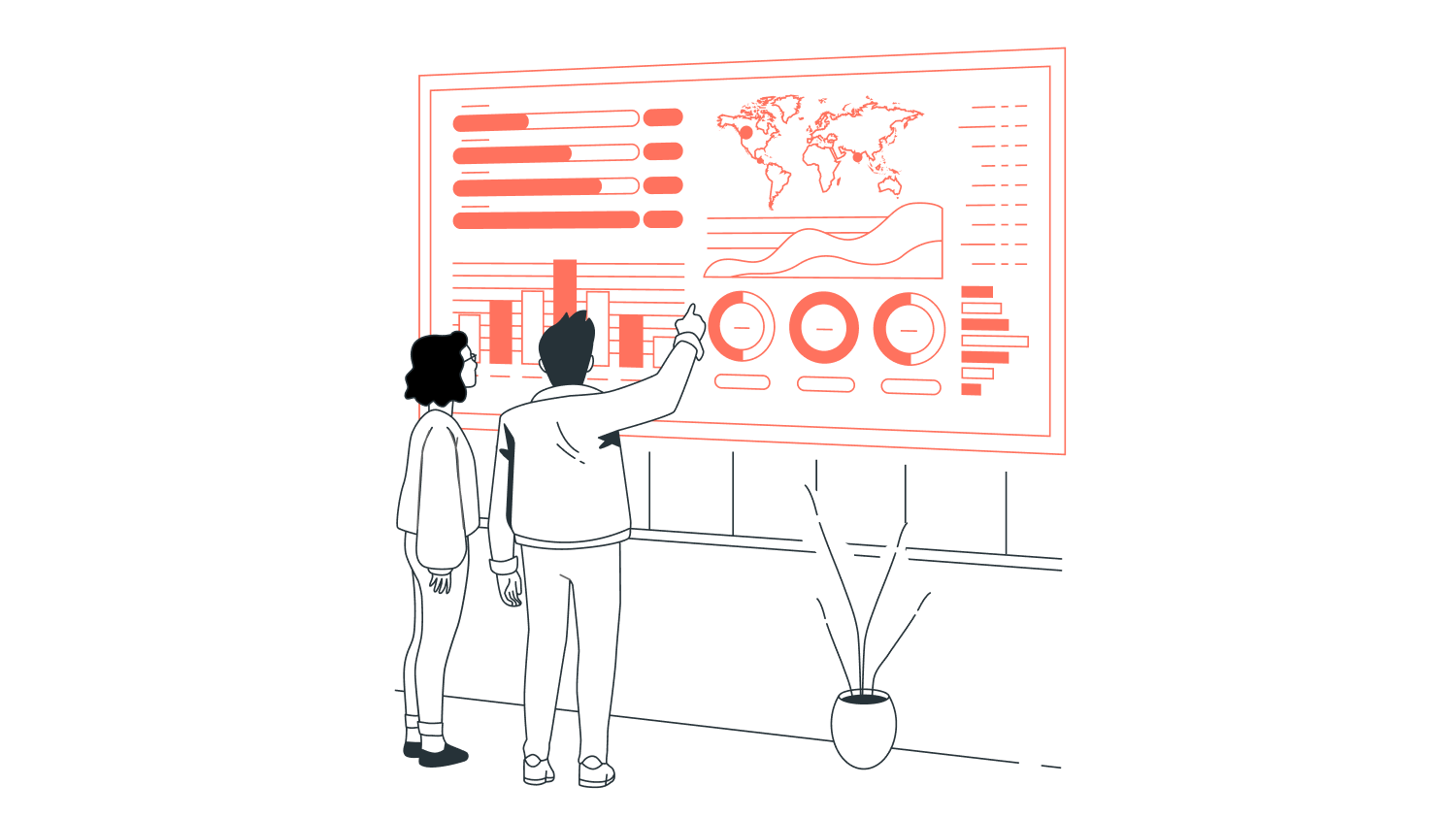If you look closely at customer analytics, things get quickly addictive as your numbers gain and drop with customer demand. While changes to product quality/features are an organization-wide process, improving retention doesn’t have to be.
This is where customer retention gets exciting; with a fixed offering, you can direct user flow to create memorable experiences for all your customers.
A couple of things though – understanding churn, the lifetime value of each customer, and the common machine learning models could help you form ML models for prolonged customer retention and better customer relationships.
Now, let’s look at how you can improve your customer retention using machine learning.
Key Takeaways
- Multiple data points are required to accurately predict customer churn
- Based on the type of business and datasets available, there are several types of ML prediction models to calculate churn
- Understanding the difference between ML models can help in deciding the best course of action for AI adoption
Understanding churn for better retention
Running a business is always about improving the quality of service every step along the way. There is no perfect company that has just one offering and survived infinitely. Often, customer demands change, and things that seem to be helpful today might get outdated tomorrow.
Thus your quality of service(QoS) drives the business forward. But since it is an intangible metric that can not be measured, we need to find other metrics to understand whether your QoS is improving or declining. Enter Churn Rate.
Churn or attrition rate shows the pace at which customers quit using your product/service over a given time. So by definition, the opposite of churn would be retention rate, the proportion of people who love and continue using your product/service.
A higher churn could be highly detrimental to companies as the cost to acquire a new customer, or the opportunity cost is more than maintaining an existing one. This makes churn a metric to reckon with in your startup days and while scaling up.
Suggested read: How Machine Learning Can Help Solving Business Problems
How ML helps reduce churn
Machine learning can significantly help improve three different aspects of a successful product – habit building, the path of least effort, and the lifetime value of customers.
Understanding each of them will point out where ML should be used in your website/application. If you have run digital marketing campaigns in the past using a CRM, for example, you get an idea of what interests your customers and what they need to see to make contact with your business.
The grocery shopping website Instacart describes its user flow as a combination of habit building and making their lives quicker. They rightly point out that new users need a habit of latching on to the platform.
As domains are forever getting competitive, it’s important to have brand loyalists who stick on organically to your business. Box purchases, repeat purchases of previous orders, and suggesting offers for similar products are some ways Instacart used for sustained sales.
When you solve a customer’s core problem, you try to bring out a solution that they can always come back to again and again. Retail stores know this, and they try to create the least path of effort for customers to complete their transactions as quickly as possible.
This creates the illusion of ease that gets retained in the customers’ minds, prompting them to buy from you when they need what you offer—combining the least effort and habit building delivers an increased lifetime value for customers. ML thus optimises user engagement and makes such lifetime value possible.
Common techniques to improve customer retention using machine learning
Understanding each ML technique can help you get an overview of the benefits of each and try to choose the best for your particular problem. This is an introductory blog on the most common ML techniques to predict churn.
If you are interested in reading scholar-grade information on ML techniques for customer retention, check out this journal paper presented to the International Journal of Advanced Computer Science and Application, which is the basis for this blog.
- Regression analysis
Regression analysis is primarily used to understand relationships between a known set of features. One peculiarity of this analysis is that it checks how one target response depends on a set of independent variables.
For companies, ‘churn’ or ‘not churn’, a binary dependent variable can be satisfactorily predicted by Logistic Regression. Independent parameters like scroll time, time on page, number or page visits, and so on can all be used to predict a customer’s chance to churn.
- Tree-based learning
In a Decision Tree model, every possible feature and its results are represented in a tree-like structure, hence the name. The biggest benefit of the decision tree model is its ability to support both categorical and continuous data.
To better understand a tree-based model, consider each variable(data set) as a node in a tree. Every branch that sprouts from it would be the possible outcome due to the changing variable. Finally, the leaves on the branch would tell whether there will be churn or not.
- Support vector machine
Support Vector Machine (SVM) is a supervised learning technique that analyses data to identify patterns. With a set of training data, the model first creates a benchmark for outcomes.
After that, every instance is compared with this benchmark and the proximity to the base values will give you an estimate of churn for the given data set.
SVM has been widely accepted as one of the more effective predictive models for churn. It can handle continuous and categorised data and has a wide range of applications in analysing business opportunities.
- Bayes algorithm
Another supervised learning technique, Bayes’ algorithm, tries to figure out the probability of events based on previous knowledge of associated variables. This prediction model considers every variable completely independent, meaning that the presence/absence of any particular feature will not affect any other feature.
Thus, the Bayes algorithm best fits churn prediction when all variables used for prediction are independent. It estimates outcomes by analysing past results. The probability scores of each instance will indicate chances for churn or retention.
- Instance-based prediction
Just as the name suggests, instance-based prediction or memory-based learning labels instances based on previous ones stored in memory. The way this model predicts churn is peculiar. Instance-based learning labels instances based on majority votes from their neighbours, which are the outcomes of the features under study.
Simply put, this model tries to label instances – a combination of real-life datasets containing feature values – by their proximity to churn or not.
- Ensemble-based learning
This model of machine learning technique makes its predictions based on a combination of outputs from multiple classifiers. It is a prediction model that considers instances from multiple sources that could affect churn and deduct the probability for churn based on them.
There are two types of ensemble-based learning: the Random Forest method and Boosting-based techniques. The Random Forest technique supports classification and regression. It is better than decision tree models as it doesn’t perform overfitting, making it a higher-performing model among the two.
- Artificial neural network
Artificial Neural Network (ANN) is inspired by the natural workings of the human brain and is one of the most popular ML techniques we use today. Just like how neurons work together to derive meaning from real-world stimuli, ANN uses connected nodes (analogous to neurons) arranged into layers.
Each node is given input data which is weighed during the learning phase to give each input the relevance it requires in predicting our required output. Thus, each output will be the weighted sum of all the inputs to each node.
Being a supervised learning technique, ANN models like Multilayer Perception (MLP) can use three or more layers to predict results for complicated problems.
- Linear Discriminant Analysis
LDA is a mathematical classification technique that uses predictors from datasets to distinguish between two results. Linear discriminant analysis is closely related to regression analysis but differs in the kind of variables it uses for prediction.
It uses continuous independent variables and a categorical dependent variable(target). Every instance is labelled based on its probability of closeness toward our required outcome. That is, the closeness to churn. The probability, in this case, is measured using the Bayes theorem.
One advantage of LDA is it can be used to determine sets of features that are the most informative and reduce the dimensions under study.
Conclusion
A lot of measurable datasets predict what makes a customer stay or leave a business. It is thus beneficial to store data based on customer interaction to predict possible pain points. AI/ML developers can help to create memorable customer experiences, which not only improve retention but also skyrockets brand loyalty.
If you are in the market for AI service providers to help you supercharge your business, talk to us today or leave a message, and we’ll get back to you.




